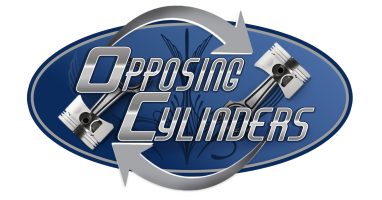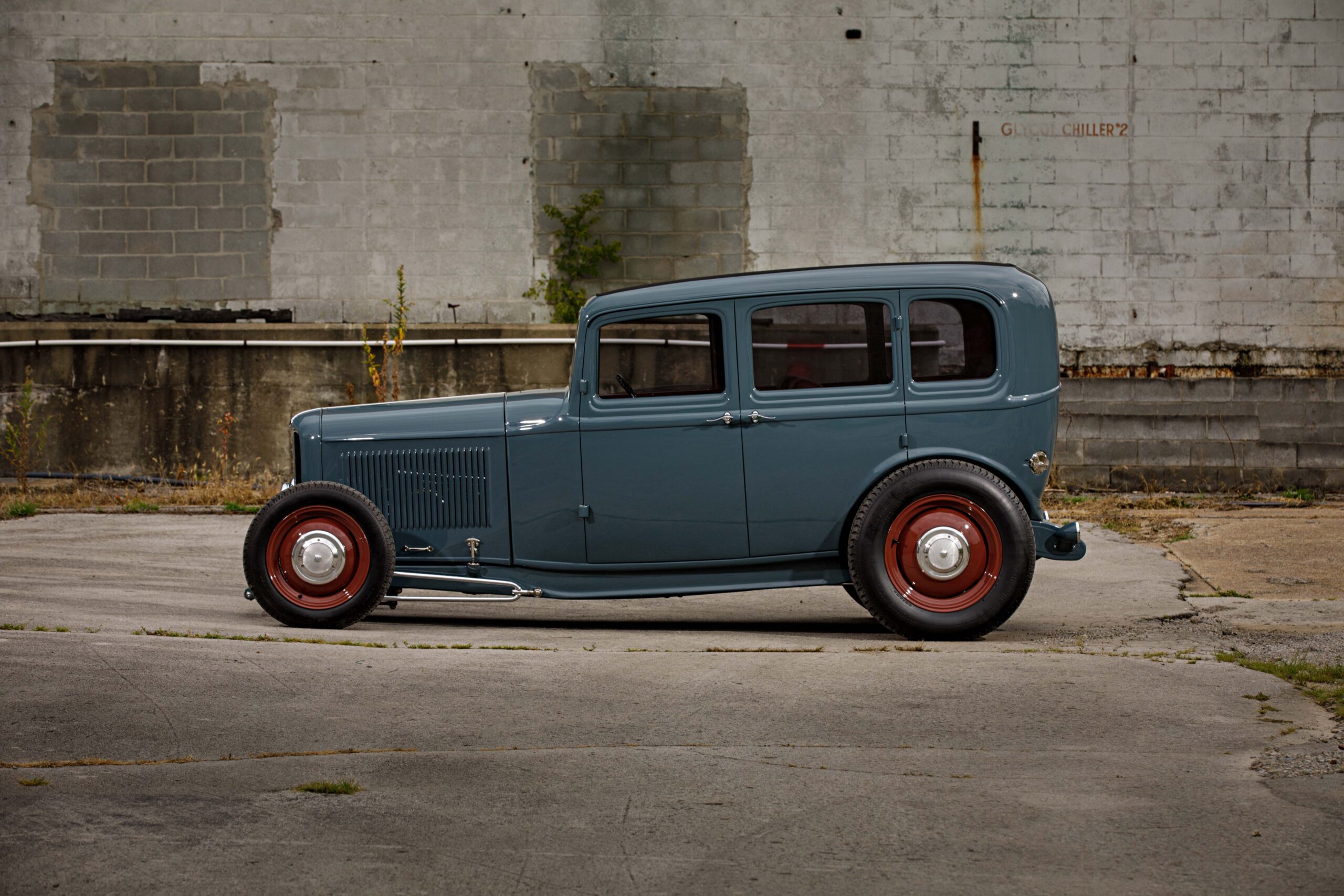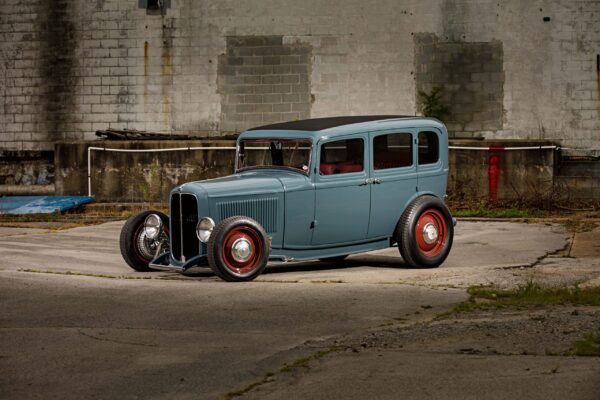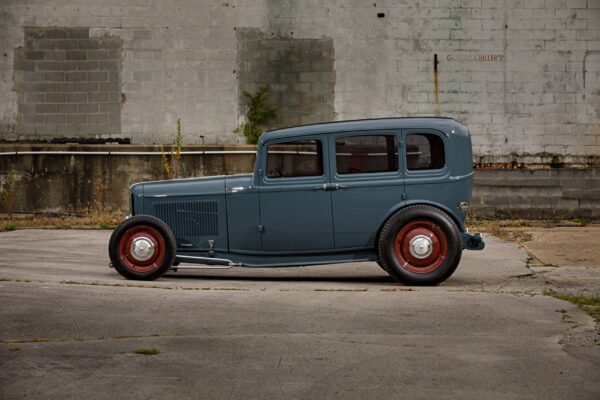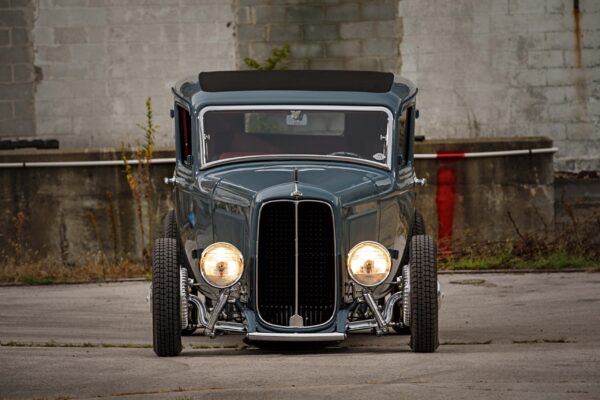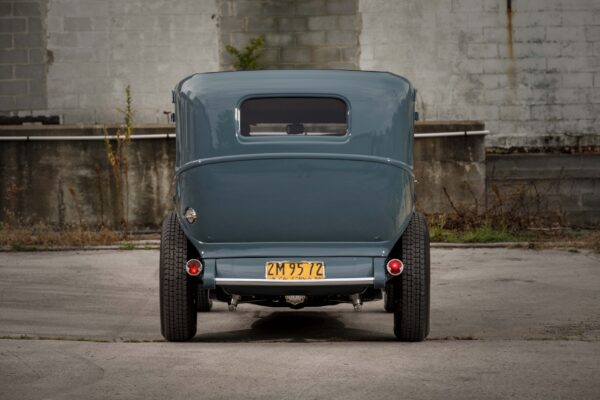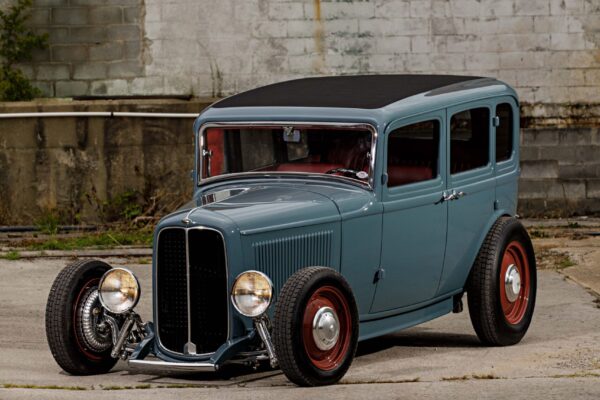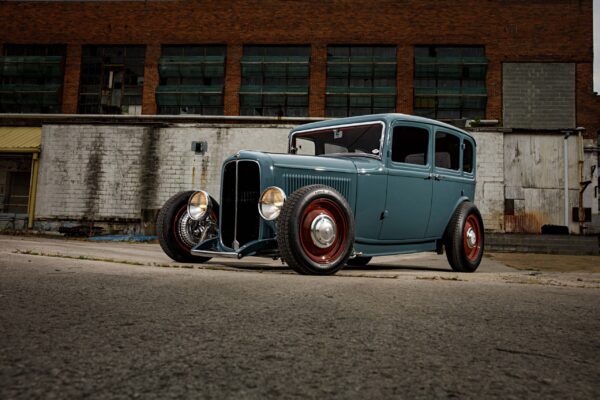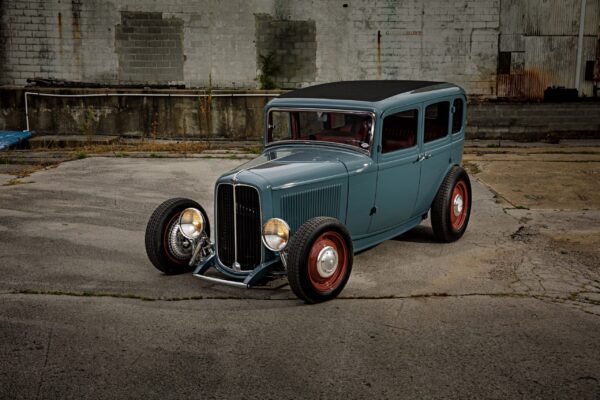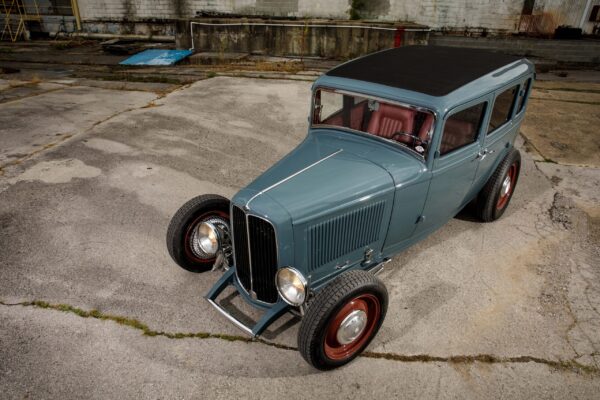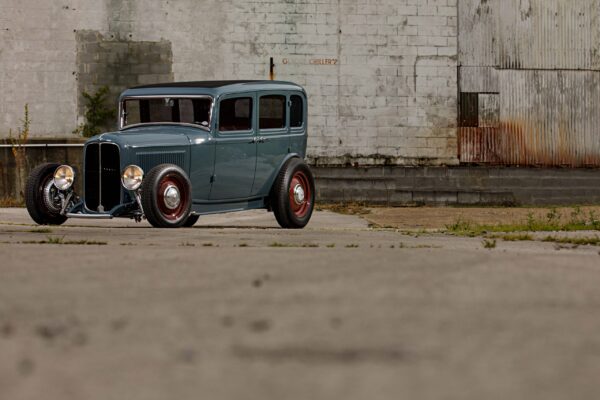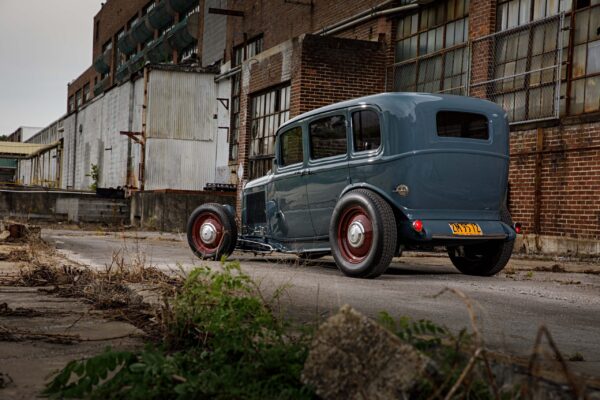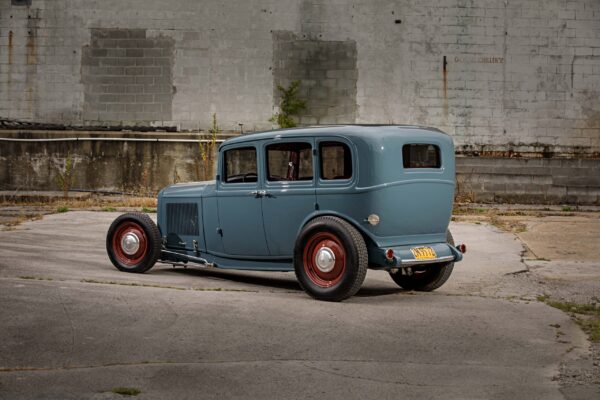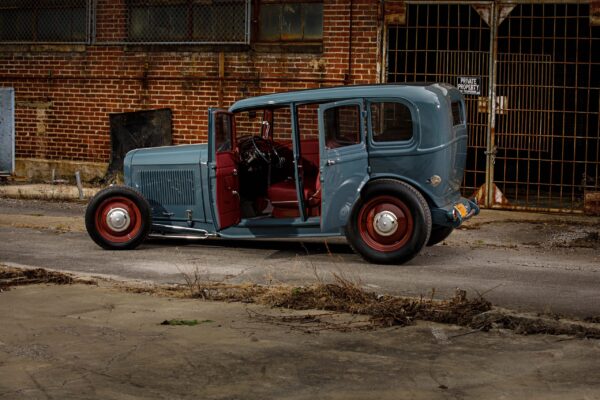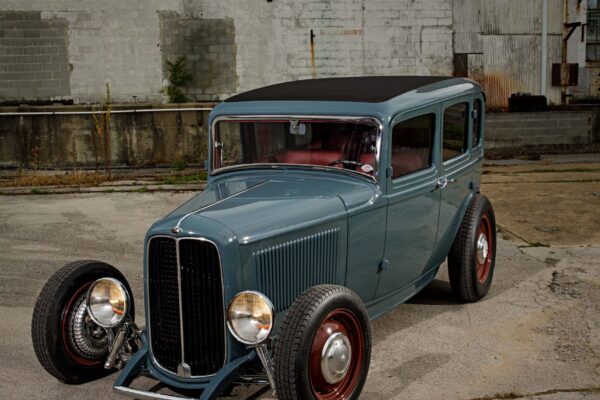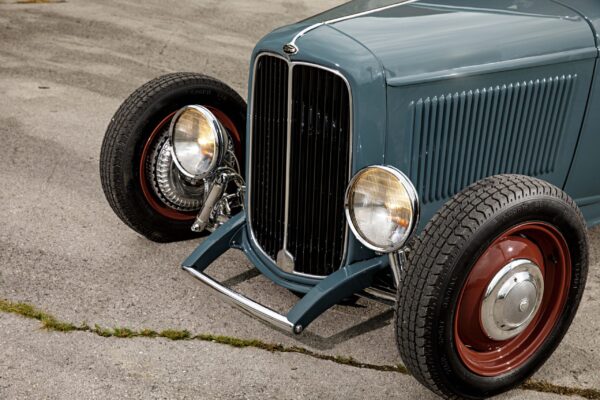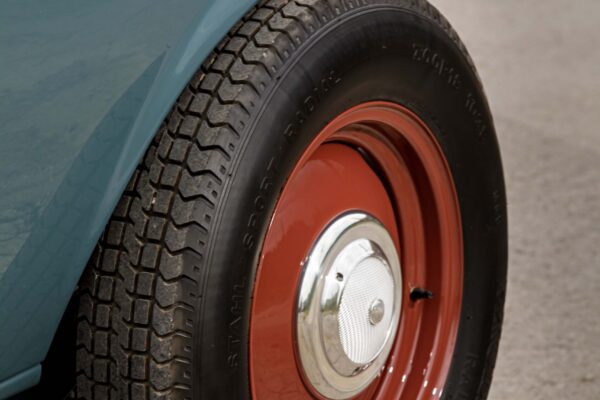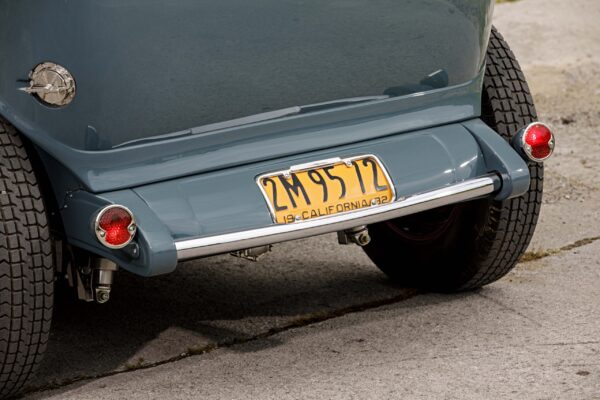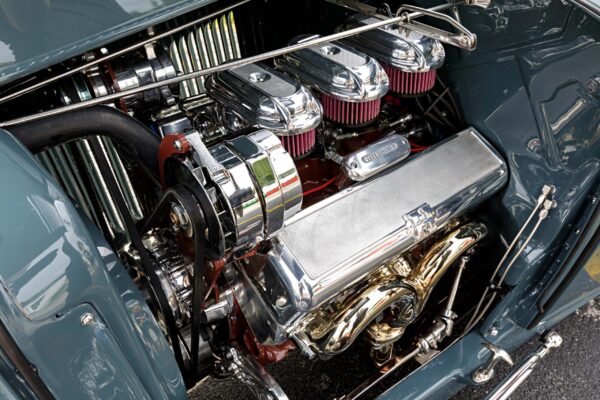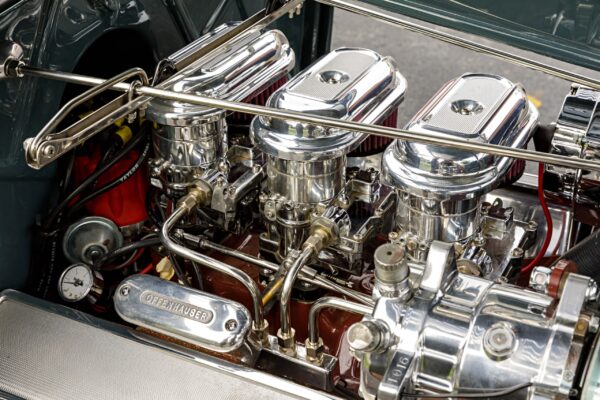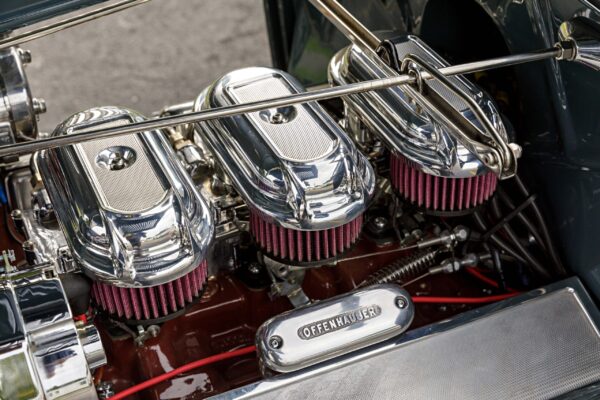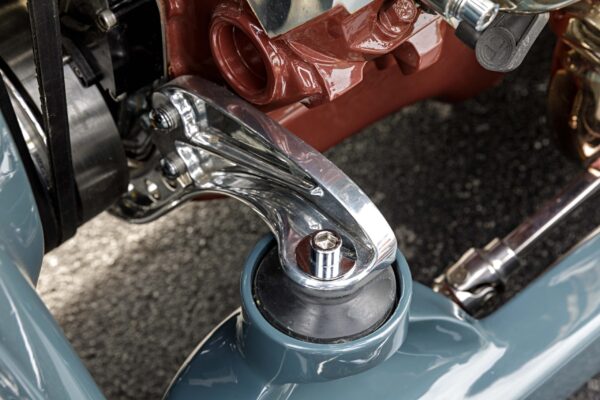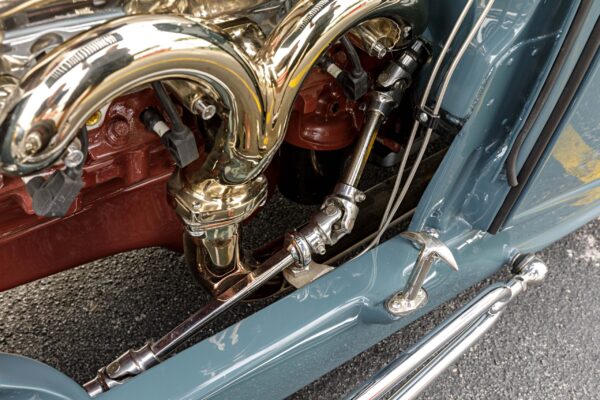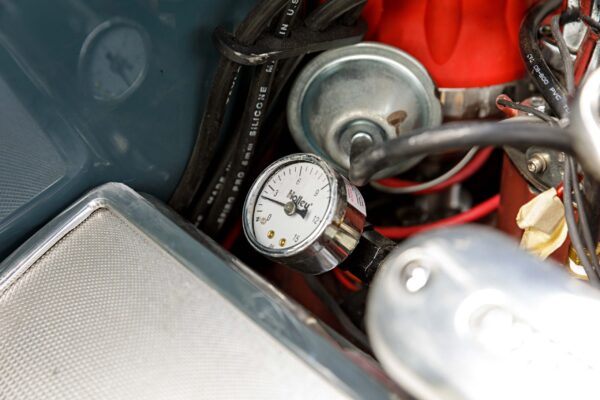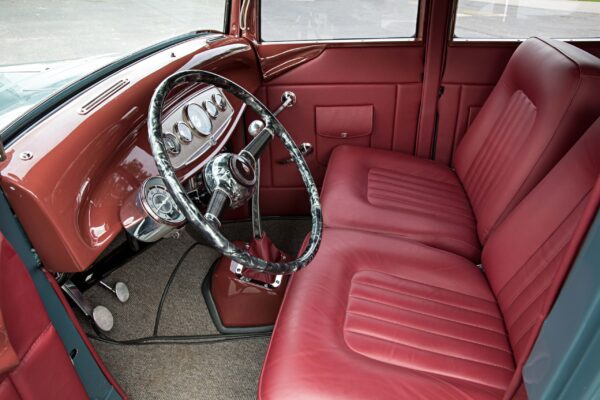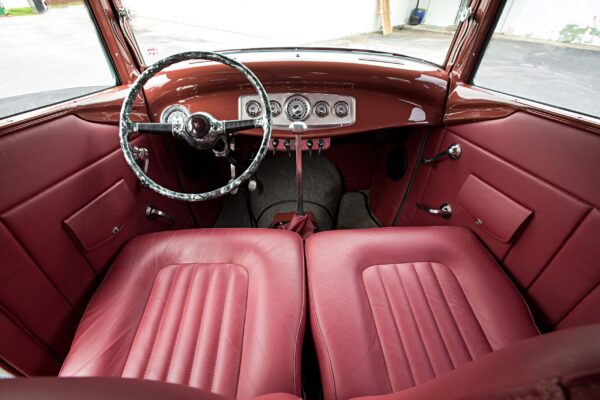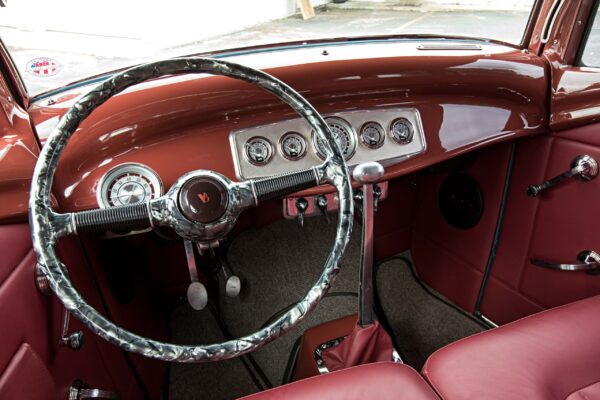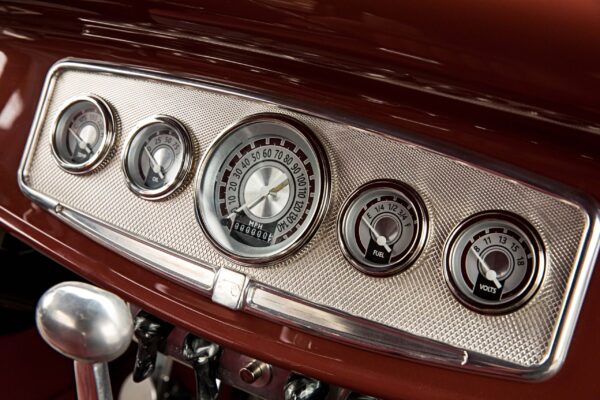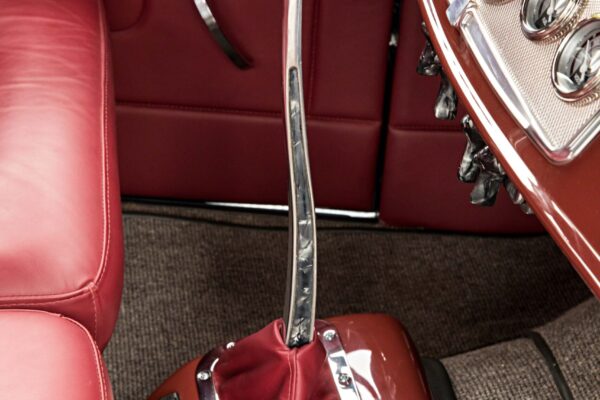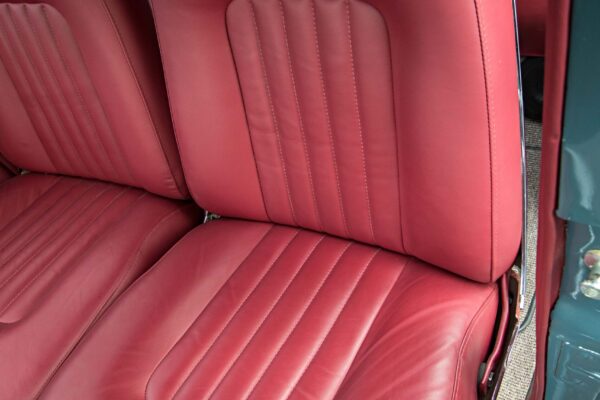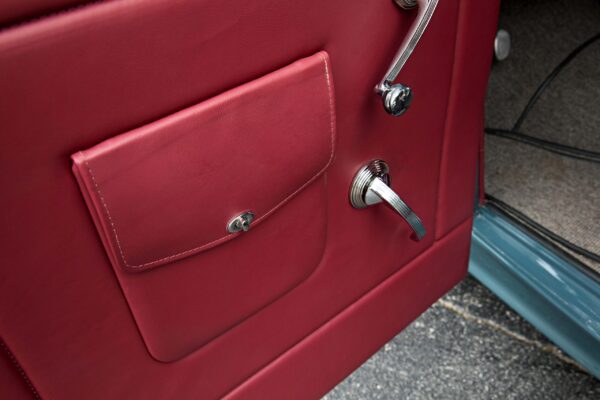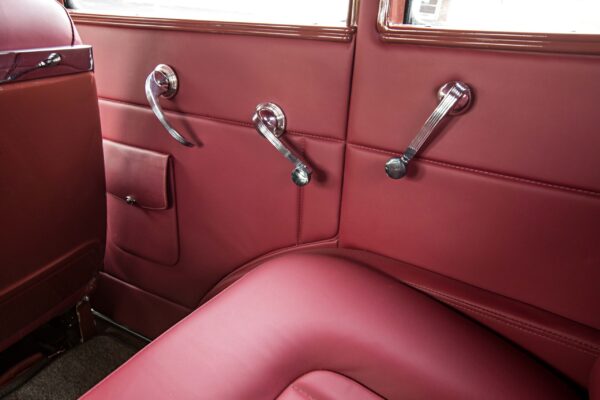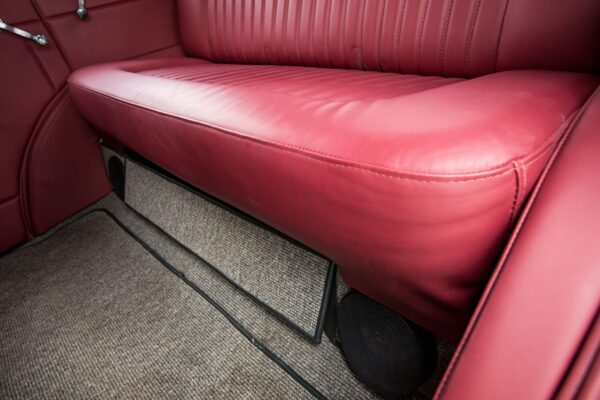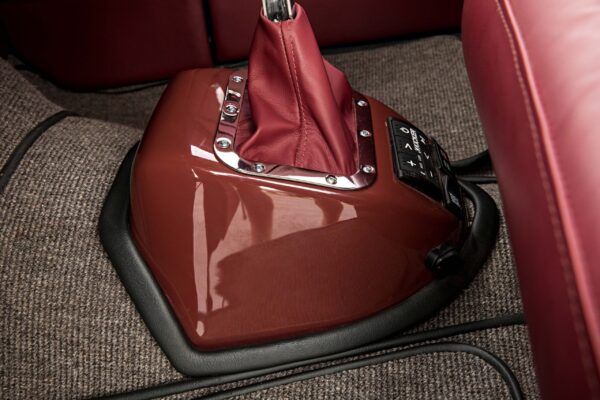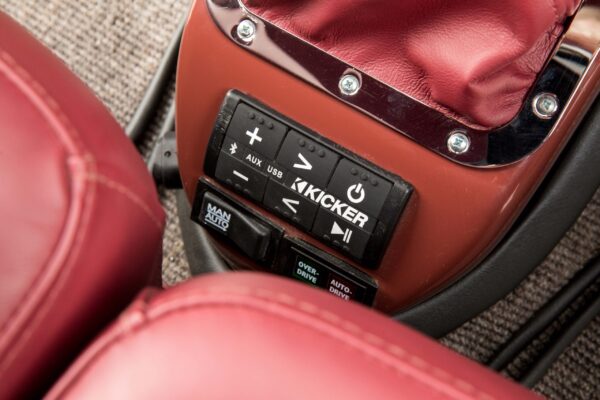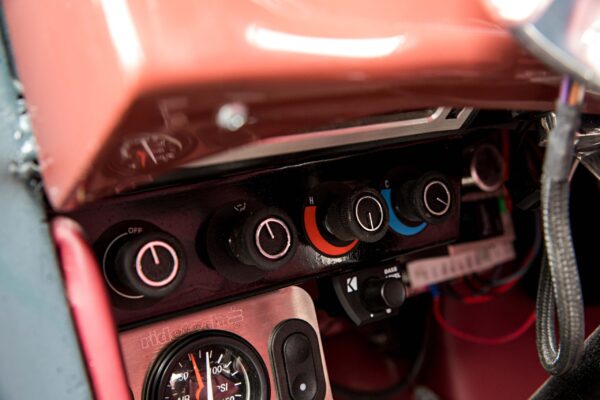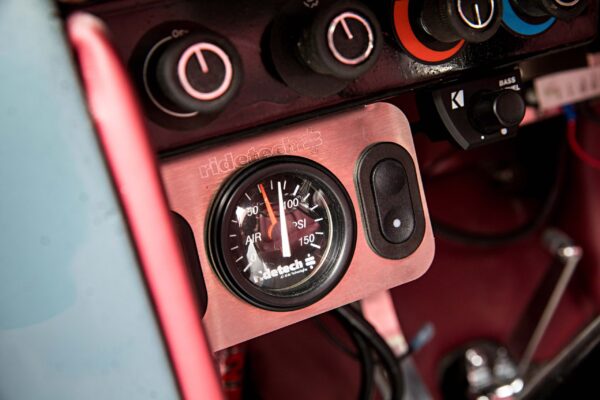Timeless 32 Fordor by Strange Motion
Hand crafted by world renowned builder Tim Strange of Strange Motion Rod & Custom, this 1932 Fordor is the epitome of timeless. The outcome of giving free rein to a talented builder steeped in tradition to construct the car that spoke to him, this one-off hotrod includes numerous subtle modifications to the Henry original steel body. Powered by a blueprint 355 with Vintage Speed tri-power setup featuring plated Rochester 2Gs wearing Pinkee’s offset-filter aluminum air cleaners on an Offenhauser intake. Art/Renderings by Problem Child Kustoms, Chassis by Steadfast Hot Rods, Interior by Hudson Hot Rods, and Plating by Advanced Plating.
One-off features include: 1) Custom Gauges by Classic Instruments, 2) Billet shifter, hubcaps and valve covers by Neely Precision, 3) Pines Winterfront style Grille by Dan Baker at Alumicraft, 4) Winters quick-change gear cover by Mike Curtis, 5) Interior steering wheel and toggle switches by Pearlcraft, 6) Crafty B fuel cover and dash panel.
Featured on the cover of Street Rodder and in Wheel Hub Magazine, the vehicle is a Shades of the Past Top 25 Car and was Top 5 for Goodguys America’s Most Beautiful Street Rod. Also featured in the Royal Purple booth at SEMA and in Axalta’s paint calendar, the vehicle has only been shown at one car show since 2018.
❇️ Price Reduced $95,000
❇️ Call Kevin, @opposingcylinders at 937-430-0242. ❇️ We are listing this for the owner.
❇️ Currently located in Tennessee.
“Sometimes, building a one-off hot rod can be difficult for some
The project began when Erik, a father of two young girls, approached Tim wanting to do something with suitable seating—and access—for four. Erik eventually located the perfect starting point: an early hot-rodded 1932 Ford four-door sedan, which Tim had hauled from Connecticut to his shop in Tennessee where the year-and-a-half collaborative with Erik and his wife, Oksana, embarked.
Notice how nice and low the Hansen Fordor sits? That’s due in no small part to Henry Richards at Steadfast Manufacturing—he whipped out a 1932 perimeter frame for Strange to platform the ensuing chassis upon. Tim utilized Pete and Jakes location devices front and rear—hairpins and ladder bars, respectively—for the 5-inch drop Super Bell I-beam and Winters quick-change featuring a one-off gear cover by Mike Curtis. Additionally, the rear was equipped with ShockWaves rather than a transverse leaf and tube shocks like the front—so ” it can sit low but raise up to drive and even more so when the kids are along with,” Tim explains. For the brake system, semi-obscured by the window-less steel wheels, a set of Kinmont Safety Stop discs from Johnson’s Hot Rod Shop were paired up with standard 11-inch Ford drums that all feed off a Pinkee’s swing pedal assembly.
Beneath the four-piece hood, nestled behind that accessory-inspired beauty of a grille (more on that later) is your basic small-block Chevy crate engine—basic in the fact that it’s a bulletproof offering from Blueprint Engines, as this is the foundation for which much of the billet component integration was exercised. Of all the items created or modified, Tim’s most proud of the valve covers—layers of machined aluminum that went from Strange’s mind to the drawing board of Brian Stupski and then digitized by Jason Norberg into a CAD file that Neely Precision used to create the final product with. In essence, they’re really valve cover covers, as there are actual aluminum ones beneath that the one-off skins attach to. Their crosshatch detailing and Hansen monogram H can be seen integrated into other areas of the sedan as well. Mechanically, the 355 relies on a Vintage Speed tri-power setup featuring plated Rochester 2Gs wearing Pinkee’s offset-filter aluminum air cleaners on an Offenhauser intake, Speedway’s TruRam exhaust manifolds feeding a Flowmaster stainless exhaust, and an MSD ignition system.
Now, despite the fact that Tim did not chop the Fordor’s top, he did spend quite a bit of time modifying a big portion of it. The roof insert is now a bolt-in affair—it was hand-constructed out of steel sheet, 3 inches longer and 4 inches wider than stock, with its edges bead-roll style to give the attaching material more detail. Tim also stretched the front doors back and the rears forward to eliminate the wider B-pillar area, spliced in 1932 roadster rear quarter fender lips, fabbed a coupe-inspired lower rear tail panel (ducktail as he refers to it) and framerail horn covers that complement, not visually obstruct, the 1932 fuel tank, and a host of many, many other things—most of which an astute Deuce aficionado might likely cringe at! When it came to the taillights, however, that’s where Oksana did not agree with the non-stock thinking, as she found nothing wrong with the 1932 Ford taillight. In response, Tim utilized original bezels and lenses along with housings he shaped to match the 1927 Chevy headlight buckets with built-in stanchions mounting the pair tight against the frame covers. As for the frontal lighting units, those are perched atop Alan Johnson’s stainless Low Boy shock/headlight mounts situated to each side of that aforementioned grille—the Pines Winterfront style insert created by Dan Baker at Alumicraft Street Rod Grilles, which Tim added a bit of road rash insurance to by creating a custom splash apron that mounts below. Once all was said and done, the final color choice ended up being Jeep Anvil Gray from Axalta Coatings.
In the end, the Hansens are not only a happy family, but Oksana’s already talking about having a truck built while Erik’s hinting toward another custom—so that ought to make Tim a happy builder, too!”
